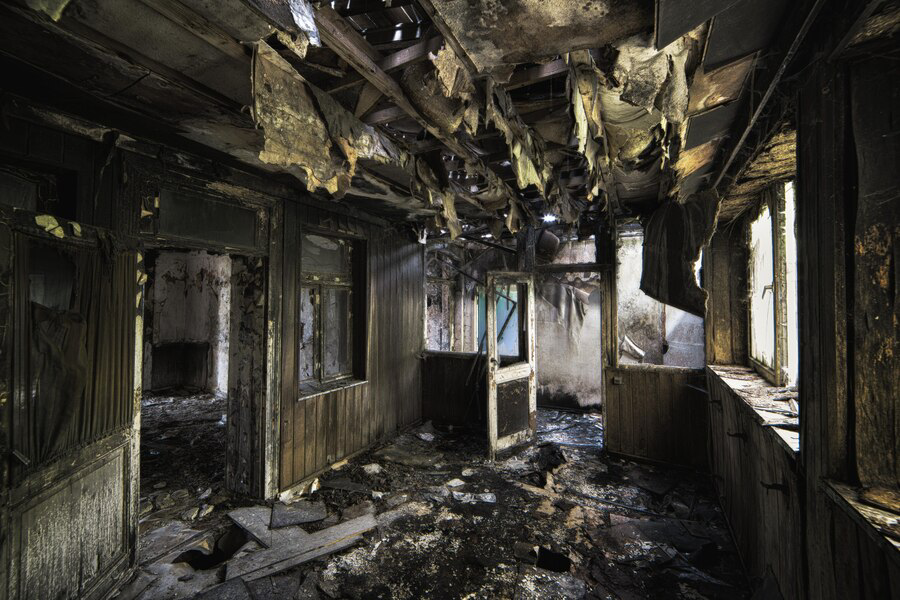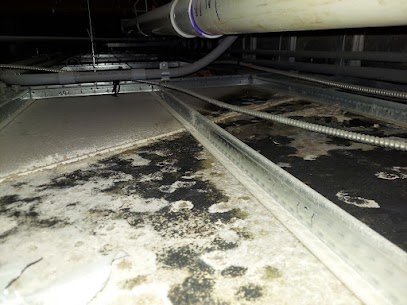Welcome to our latest blog post where we delve into a topic that affects countless households worldwide: black mold. While often overlooked, black mold poses serious health risks and can wreak havoc on both property and well-being. In this comprehensive guide, we’ll explore the insidious nature of black mold, its common hiding spots within homes, and most importantly, the potential dangers it presents to you and your loved ones. From its stealthy growth in damp, dark corners to its ability to trigger respiratory issues and allergic reactions, understanding the nuances of black mold is crucial for safeguarding your home environment. We’ll discuss how to identify black mold, the importance of prompt remediation, and proactive measures you can take to prevent its recurrence. Join us as we uncover the hidden dangers lurking within your home and empower you with the knowledge needed to combat this silent intruder effectively. Let’s embark on this journey toward a healthier, mold-free living space together.
Detect and Protect: Early Signs of Black Mold Infestation and How to Respond

Black mold infestations are often stealthy, creeping into our homes unnoticed until significant damage is done. Recognizing the early signs of black mold can be crucial in preventing widespread contamination and potential health risks. In this guide, we’ll explore eight early indicators of black mold infestation and provide actionable steps on how to respond effectively.
Musty Odors
One of the first signs of black mold is a distinctive musty odor, often described as earthy or damp. If you detect a persistent musty smell in certain areas of your home, especially in basements, bathrooms, or areas prone to moisture, it could indicate the presence of hidden mold growth. Take immediate action to investigate further.
Visible Mold Growth
While black mold can be adept at hiding in unseen spaces, it can also manifest visibly on surfaces. Keep a vigilant eye out for patches of black or dark greenish mold on walls, ceilings, or other damp surfaces. Don’t ignore even small patches, as they can quickly spread and indicate a larger infestation.
Water Damage
Any history of water leaks, flooding, or moisture problems in your home can create the ideal conditions for black mold growth. Inspect areas where water damage has occurred, such as around plumbing fixtures, beneath sinks, or near windows, for signs of mold colonization. Addressing water issues promptly is essential in preventing mold infestations.
Allergic Reactions
Individuals sensitive to mold may experience allergic reactions when exposed to black mold spores. Symptoms can include sneezing, coughing, nasal congestion, skin irritation, and even respiratory issues. Pay attention to any unexplained allergic symptoms, especially when they worsen indoors or in specific areas of your home.
Discoloration and Staining
Black mold can cause discoloration and staining on various surfaces, including walls, ceilings, and fabrics. Look out for dark patches or stains that appear fuzzy or slimy, as these may indicate active mold growth. Discoloration coupled with a musty odor is a strong indication of a mold problem.
The Silent Invader: Understanding Black Mold's Impact on Indoor Air Quality
Indoor air quality is a crucial yet often overlooked aspect of our living environments. While we may diligently clean and maintain our homes, the presence of black mold can silently compromise the air we breathe. In this exploration, we’ll delve into the insidious nature of black mold and its profound impact on indoor air quality, as well as strategies to mitigate its effects.
The Hidden Threat
Black mold, scientifically known as Stachybotrys chartarum, is a toxic mold species that thrives in damp, poorly ventilated environments. Unlike visible dust or dirt, black mold infiltrates the air we breathe, releasing microscopic spores that can trigger allergic reactions and respiratory issues. Its ability to grow undetected in hidden corners of our homes makes it a particularly insidious invader of indoor air quality.
Airborne Contamination
As black mold colonies mature, they release spores into the air as part of their reproductive cycle. These spores can become airborne and circulate throughout your home, contaminating indoor air. Once inhaled, mold spores can trigger allergic reactions, asthma attacks, and other respiratory problems, especially in individuals with pre-existing sensitivities.
Respiratory Health Risks
Prolonged exposure to black mold spores can have serious consequences for respiratory health. Inhalation of mold spores can irritate the airways, leading to symptoms such as coughing, wheezing, chest tightness, and shortness of breath. Individuals with asthma or allergies may experience exacerbated symptoms in mold-contaminated environments.

Aggravation of Allergies
Black mold allergies are common and can manifest as a range of symptoms, including sneezing, nasal congestion, itchy eyes, and skin rashes. For those already susceptible to allergies, exposure to mold spores can exacerbate existing symptoms and decrease overall quality of life. Identifying and mitigating mold sources is essential for managing allergy symptoms.
Toxic Mold Syndrome
In severe cases of black mold exposure, individuals may develop toxic mold syndrome, also known as mold toxicity or mold illness. This condition is characterized by a wide range of symptoms, including chronic fatigue, headaches, cognitive impairment, and immune dysfunction. Toxic mold syndrome can significantly impact daily functioning and may require medical intervention.
Beyond the Surface: Long-Term Effects of Black Mold Exposure
Black mold, with its stealthy infiltration and toxic spores, poses a hidden danger that extends far beyond the surface. While visible signs of mold may prompt immediate action, it’s essential to understand the long-term consequences of exposure. In this exploration, we’ll delve into the enduring effects of black mold exposure on health and well-being.
- Respiratory Health: Prolonged exposure to black mold can lead to chronic respiratory issues, including asthma, bronchitis, and recurring infections. The respiratory system bears the brunt of mold spores, causing inflammation and compromising lung function over time.
- Neurological Impact: Black mold toxins can affect the nervous system, leading to symptoms such as headaches, dizziness, memory loss, and cognitive impairment. Chronic exposure may contribute to neurological disorders and impact overall cognitive function.
- Immune Dysfunction: Mold exposure can weaken the immune system, making individuals more susceptible to infections and illnesses. Long-term suppression of immune function can have far-reaching implications for overall health and well-being.
- Allergic Reactions: Black mold allergies can worsen over time with continued exposure, resulting in persistent symptoms such as sneezing, congestion, skin rashes, and eye irritation. Managing allergies becomes increasingly challenging as mold contamination persists.
Beyond its visible presence, black mold harbors a multitude of long-term health risks that demand attention and action.
Conclusion
At Precision Restoration, Inc., located in Oklahoma City, Oklahoma, we emphasize the critical importance of understanding the dangers posed by black mold in your home. Through our comprehensive approach to mold remediation and restoration services, we strive to protect the health and well-being of our clients. Black mold can pose severe health risks and compromise the structural integrity of your property if left unchecked. Therefore, our commitment to thorough inspection, efficient removal, and preventive measures underscores our dedication to ensuring safe and healthy living environments for all.



